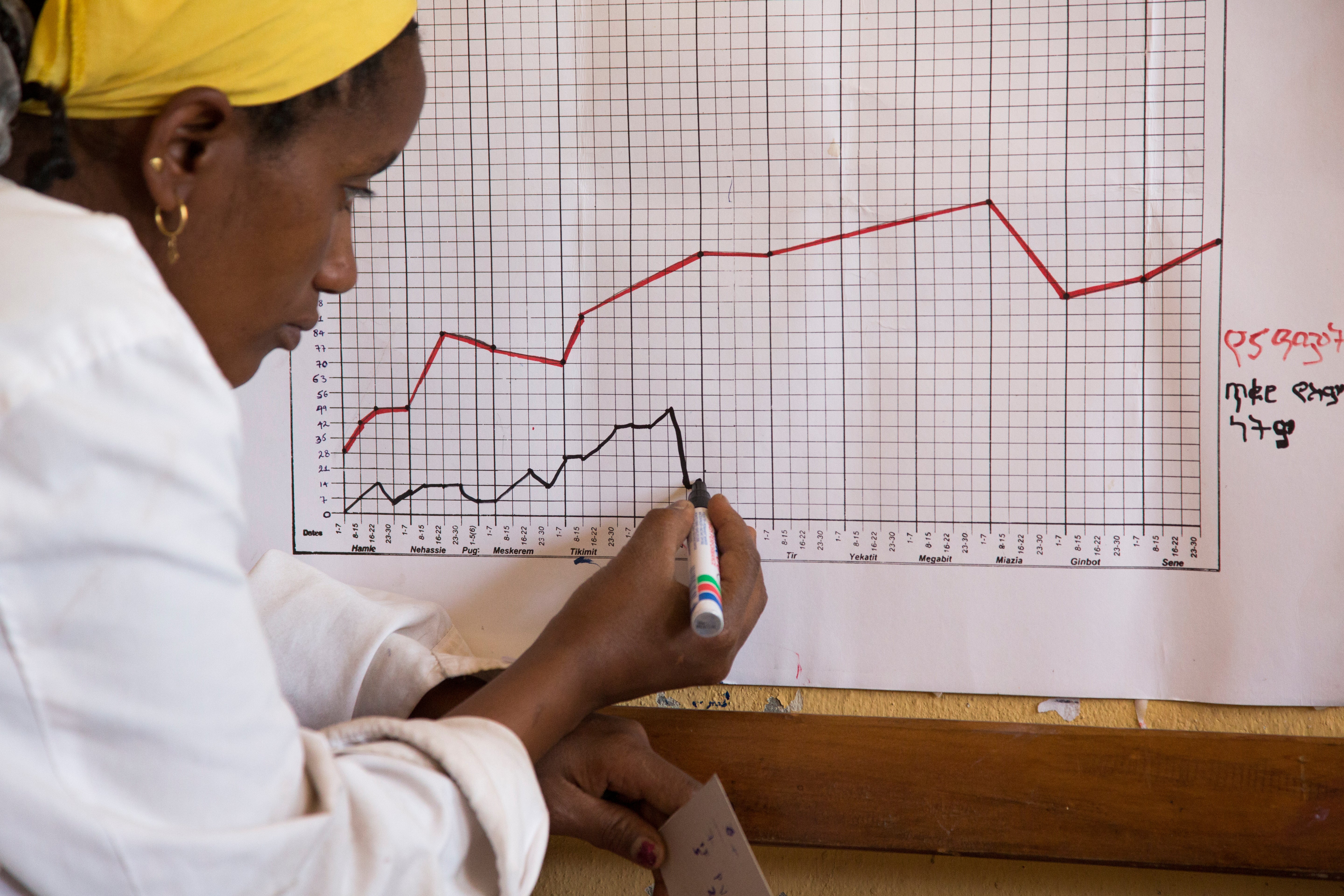Demographic characteristics
Ethiopia is a diverse country made up of many ethnic groups, the two largest of which are the Oromo and Amhara which respectively constitute 34.4% and 27.0% of the population. Language is strongly linked to ethnicity in Ethiopia, with Oromo and Amharic being the two most commonly spoken languages.
The population of Ethiopia has aged slightly in the past two decades, according to UN population estimates, with children under five constituting 14.6% of the population in 2020 as compared with 18.6% of the population in 2000.
Figure 36: Population Pyramid in Ethiopia for 2000 and 2020

United Nations, Department of Economic and Social Affairs, Population Division. World Population Prospects: The 2019 Revision. (Medium variant).
Household infrastructure
Economic advancement at the macro level has resulted in substantially different microeconomic realities for people in Ethiopia. From 2000 to 2019, the percentage of households with an improved water source increased from 25.3% to 68.7%. Similarly, access to improved sanitation facilities increased from 0.6% to 19.5%. Electricity access and cell phone ownership have also seen increases as in 2019, 35.0% of households had access to electricity and 67.8% owned a mobile phone.
Women’s empowerment
Certain indicators of women’s empowerment have shown marked progress in recent decades, such as declining marriage rates for women younger than fifteen as well as improving literacy rates. Whereas in 2000, 14.4% of women were married before age fifteen, by 2016 this decreased to 5.7%. From 2000 to 2019, literacy rate among women improved from 18.5% to 47.6%, while the percentage of women who had completed at least primary school increased from 10.7% to 24.3%.
Other public health challenges
The incidence of malaria has decreased dramatically in Ethiopia, from 329.4 cases per 1,000 people at risk in 2000 to 46.3 cases per 1,000 people at risk in 2021. The prevalence of HIV also declined substantially from its peak of 3.0% in 1996 to 0.8% in 2021. Other key emerging public health threats increasingly are linked to climate related issues and implications that shifting weather patterns have on food systems.

Development Assistance for Health
Levels of Development Assistance for Health (DAH) funding in Ethiopia have increased dramatically over the past two decades. International aid for child and newborn health increased from 23 million in 2000 to 160 million in 2018 while aid for reproductive and maternal health has grown from 22 million to 140 million over the same span.
Figure 38: Development Assistance for Health (DAH) in Ethiopia from 2000 to 2018

Institute for Health Metrics and Evaluation (IHME). Financing Global Health Visualization. Seattle, WA: IHME, University of Washington, 2021. Available from http://vizhub.healthdata.org/fgh/. (Accessed 17 November 2022)
